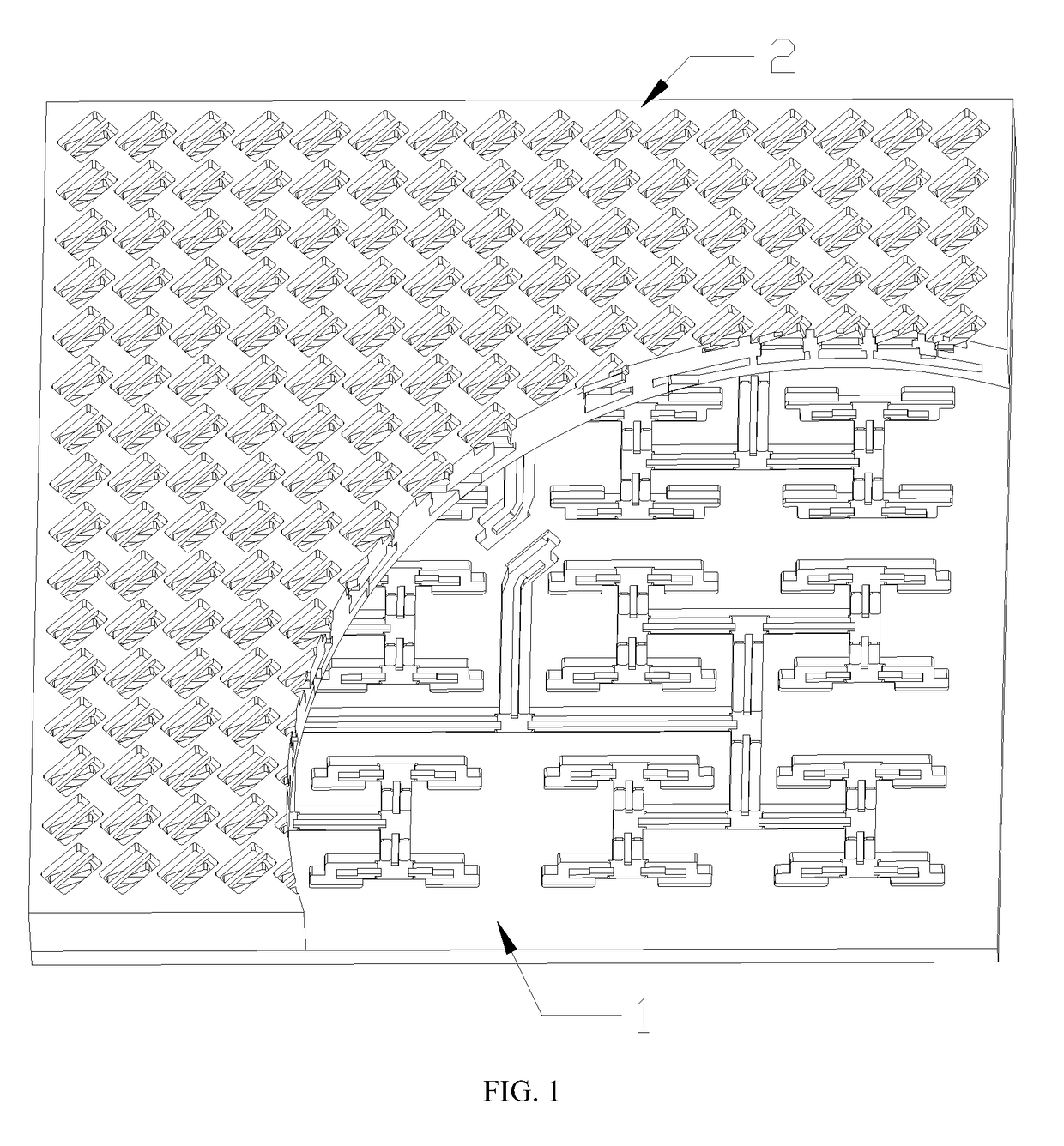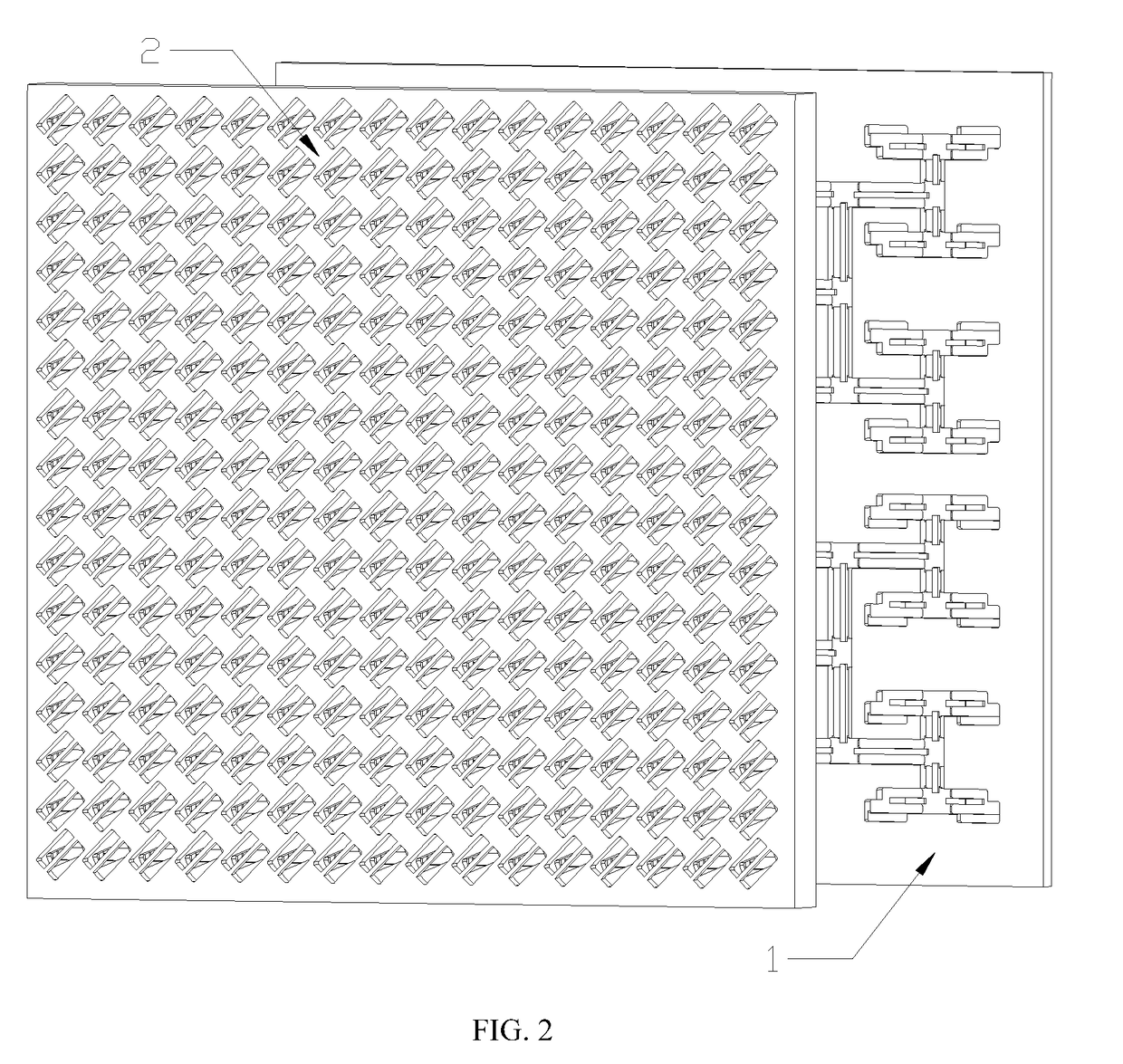Waveguide slotted array antenna
- Summary
- Abstract
- Description
- Claims
- Application Information
AI Technical Summary
Benefits of technology
Problems solved by technology
Method used
Image
Examples
first embodiment
[0030] as is shown in FIGS. 1-9, a waveguide slotted array antenna comprises a feed layer 1 and a radiation layer 2, wherein the feed layer 1 is located below the radiation layer 2, and the radiation layer 2 comprises a first radiation unit, a second radiation unit, a third radiation unit and a fourth radiation unit which are stacked from bottom to top.
[0031]The first radiation unit comprises a first flat metal plate 3 and a first radiation array arranged on the first flat metal plate 3; the first radiation array comprises n2 radiation cavities 4 which are arranged at intervals, wherein n=2k, and k is a positive integer which is equal to or greater than two; the radiation cavities 4 are rectangular concave cavities formed in the upper surface of the first flat metal plate 3, and the n2 radiation cavities 4 are distributed on the first flat metal plate 3 in n columns and n rows; first matching plates 5 are separately arranged in the middle of the front side wall and the middle of the...
second embodiment
[0040] as is shown in FIGS. 1-9, a waveguide slotted array antenna comprises a feed layer 1 and a radiation layer 2, wherein the feed layer 1 is located below the radiation layer 2, and the radiation layer 2 comprises a first radiation unit, a second radiation unit, a third radiation unit and a fourth radiation unit which are stacked from bottom to top.
[0041]The first radiation unit comprises a first flat metal plate 3 and a first radiation array arranged on the first flat metal plate 3; the first radiation array comprises n2 radiation cavities 4 which are arranged at intervals, wherein n=2k, and k is a positive integer which is equal to or greater than two; the radiation cavities 4 are rectangular concave cavities formed in the upper surface of the first flat metal plate 3, and the n2 radiation cavities 4 are distributed on the first flat metal plate 3 in n columns and n rows; first matching plates 5 are separately arranged in the middle of the front side wall and the middle of the...
PUM
 Login to View More
Login to View More Abstract
Description
Claims
Application Information
 Login to View More
Login to View More - R&D
- Intellectual Property
- Life Sciences
- Materials
- Tech Scout
- Unparalleled Data Quality
- Higher Quality Content
- 60% Fewer Hallucinations
Browse by: Latest US Patents, China's latest patents, Technical Efficacy Thesaurus, Application Domain, Technology Topic, Popular Technical Reports.
© 2025 PatSnap. All rights reserved.Legal|Privacy policy|Modern Slavery Act Transparency Statement|Sitemap|About US| Contact US: help@patsnap.com



